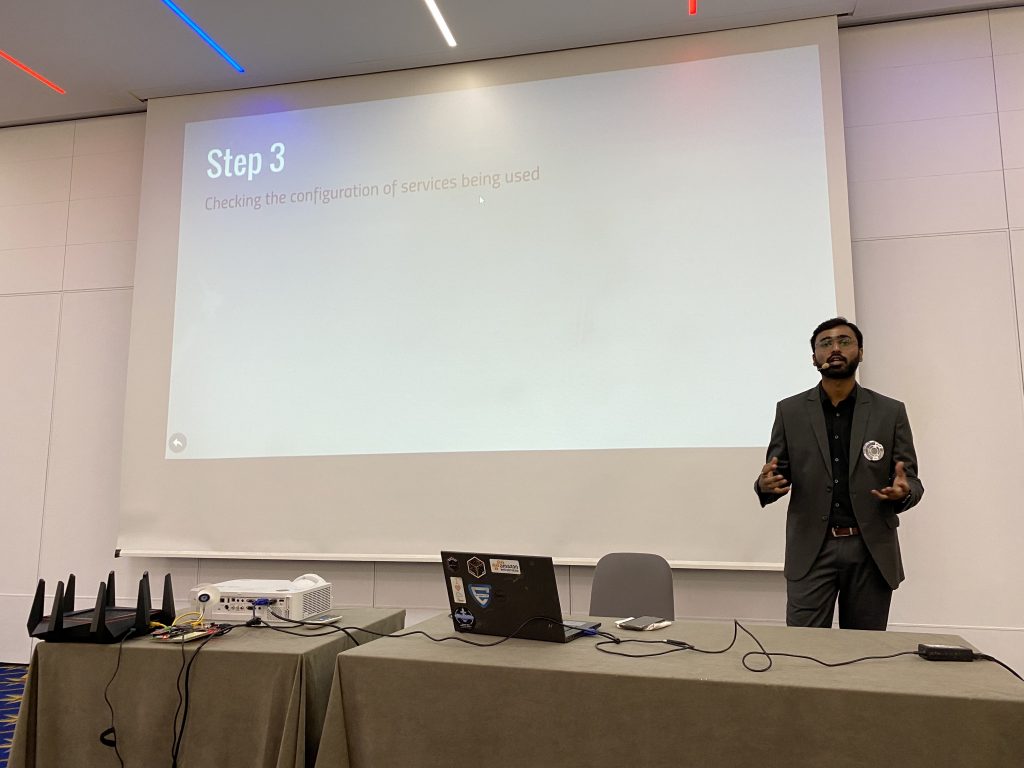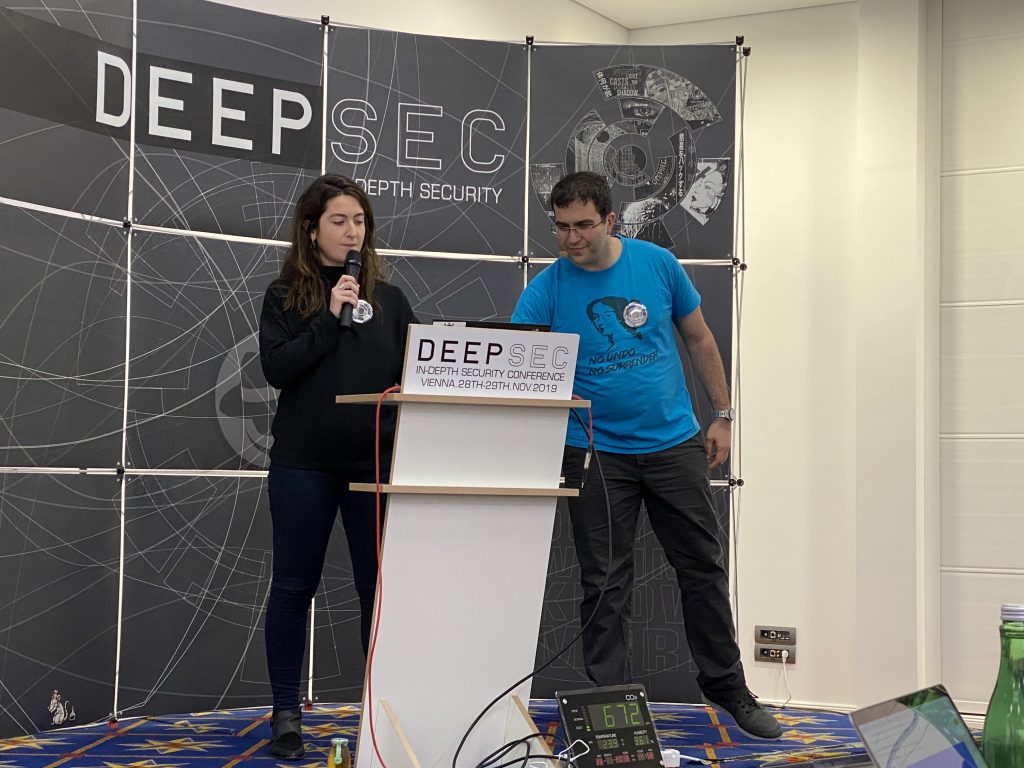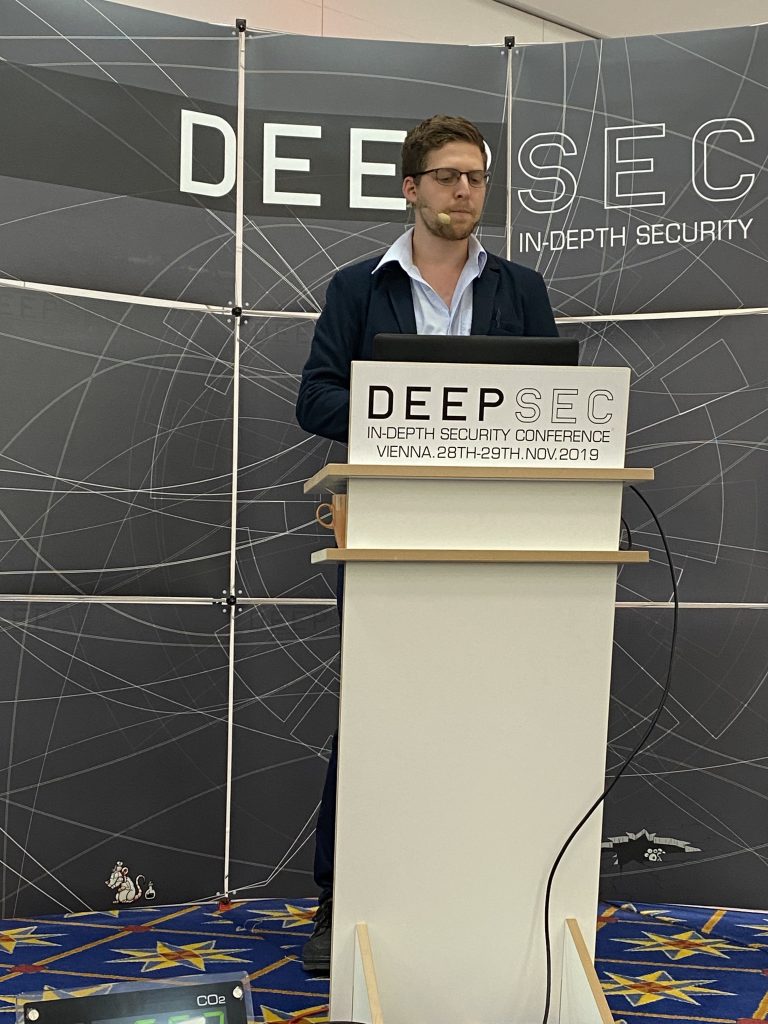Hello from Vienna where I’m at the DeepSec conference. Initially, I was scheduled to give my OSSEC training but it was canceled due to a lack of students. Anyway, the organizers proposed to me to join (huge thanks to them!). So, here is a wrap-up of the first day!
After the short opening ceremony by René Pfeiffer, the DeepSec organizer, the day started with a keynote. The slot was assigned to Raphaël Vinot and Quinn Norton: “Computer security is simple, the world is notâ€.Â

I was curious based on the title but the idea was very interesting. Every day, as security practitioners, we deal with computers but we also have to deal with people that use a computer we are protecting! We have to take them into account. Based on different stories, Raphaël and Quinn gave their view of how to communicate with our users. First principle: Listen to them! Let them explain with their own words and shut up. Even if it’s technically incorrect, they could have interesting information for us. The second principle is the following: If you don’t listen to your users, you don’t know how to make your job! The next principle is to learn how they work because you must adapt to them. More close to your users you are, the more you can understand the risks they are facing. Also, don’t say “Do this, then this, …” but explain what is behind the action, why they have to do this. Don’t go too technical if people don’t ask details. Don’t scare your users! The classic example is the motivated user that has to finish his/her presentation for tomorrow morning. She/he must transfer files to home but how? If you block all the classic file transfer services, be sure that the worst one will be used. Instead, promote a tool that you trust and that is reliable! Very interesting keynote!
The first regular talk was presented by Abraham Aranguren: “Chinese Police & Cloudpetsâ€. If you don’t Cloudpets, have a look at this video. What could go wrong? A lot! The security of this connected toy was so bad that major resellers like Walmart or Amazon decided to stop selling it. It’s a connected toy linked to mobile apps to exchange messages between parents and kids. Nice isn’t it? But they made a lot of mistakes regarding the security of the products. Abraham reviewed them:

- Bad BlueTooth implementation, no control to pair or push/fetch data from the toy
- Unprotected MongoDB indexed by Shodan, attacked multiple times by ransomware
- Unencrypted firmware
- Can be used as a spy device
- The domain used to interact with the toy is now for sale (mycloudpets.com)
- No HTTPS support
- All recordings available in an S3 bucket (800K customers!)
The next part of the talk was about mobile apps used by Chinese police to track people, especially the Muslim population in Xinjiang: IJOP & BXAQ. IJOP means “Integrated Joint Operations Platform” and is an application used to collect private information about people and to perform big data analysis. The idea is to collect unusual behaviors and report them to central services for further investigations. The app was analyzed, reverse-engineered and what they found is scaring. Collected data are:
- Recording of height & blood type
- Anomaly detection
- Political data
- Religious data
- Education level
- Abnormal electricity use
- Problematic tools -> to make explosives?
- IF stopped using phoneÂ
The BXAQ app is a trojan that is installed even on tourists phones to collect “interesting” data about them:
- It scans the device on which it is installed
- Collected info: calendar, contacts, calls, SMS, IMEI, IMSI, hardware details
- Scan files on SD card (hash comparison)
- A zip file created (without any password) and uploaded to police server
After a welcomed coffee break, I came back to the same track to attend “Mastering AWS pen testing and methodology†by Ankit Giri. The idea behind this talk is to get a better idea about how to pentest an AWS environment.

The talk was full of tips & tricks but also references to tools. The idea is to start by enumerating the AWS accounts used by the platform as well as the services. To achieve this, you can use aws-inventory. Then check for CloudWatch, CloudTrail of BillingAlerts. Check the configuration of services being used. Make notes of services interacting with each other. S3 buckets are, of course, juicy targets. Another tool presented was S3SCanner. Then keep an eye on the IAM: how accounts are managed, what are the access rights, keys, roles. In this case, PMApper can be useful. EV2 virtual systems must be reviewed to find open ports, ingress/egress traffic, and their security groups! If you are interested in testing AWS environments, have a look at this arsenal. To complete the presentation, a demo of prowler was performed by Ankit.
Then Yuri Chemerkin presented “Still Secure. We Empower What We Harden Because We Can Conceal“. To be honest with you, I did not understand the goal of the presentation, the speaker was not very engaging and many content was in Russian… Apparently, while discussing with other people who attended the talk, it was related to the leak of information from many tools and how to use them in security testing…
The next one was much more interesting: “Android Malware Adventures: Analyzing Samples and Breaking into C&C” presented by KürÅŸat OÄŸuzhan Akıncı & Mert Can CoÅŸkuner. The talk covered the hunt for malware in the mobile apps ecosystem, mainly Android (>70% of new malware are targeting Android phones). Even if Google implemented checks for all apps submitted to the Play store, the solution is not bullet-proof and, like on Windows systems, malware developers have techniques to bypass sandbox detection… They explained how they spotted a campaign targetting Turkey. They analyzed the malware and successfully exploited the C2 server which was vulnerable to:
- Directory listing
- Lack of encryption keys
- Password found in source code
- Weak upload feature, they uploaded a webshell
- SQLi
- Stored XSS
In the end, they uncovered the campaign, they hacked back (with proper authorization!), they restored stolen data and prevented further incidents. Eight threat actors were arrested.
My next choice was again a presentation about the analysis of a known campaign: “The Turtle Gone Ninja – Investigation of an Unusual Crypto-Mining Campaign” presented by Ophir Harpaz, Daniel Goldberg.

The campaign was “NanshOu” and it’s not a classic one. Ophir & Daniel gave many technical details about the malware, how it infected thousands of MSSQL servers to deploy a crypto-miner. Why servers? Because they require less interaction, they have better uptime, they have lot of resources and are maintained by poor IT teams ;-). The infection path was: scanning for MSSQL servers, brute force them, enable execution of code (via xp-cmdshell()), drop files and execute them.
Then, Tim Berghoff and Hauke Gierow presented “The Daily Malware Grind†– Looking Beyond the Cybers“. They performed a review of the threat landscape, ransomware, crypto-miners, RATs, etc… Interesting fact: old malware remains active.
Lior Yaari talked about a hot topic these days: “The Future Is Here – Modern Attack Surface On Automotive“. Do you know that IDS are coming to connected cars automotive today? It’s a fact, cars are ultra-connected today and it will be worse in the future. If, in the year 2005, cars had an AUX connected and USB ports, today they have GPS, 4G, BT, WiFi and a lot of telemetrics data sent to the manufacturer! By 2025, cars will be part of clouds, be connected to PLC, talk to electric chargers, gas stations, etc. Instead of using ODB2 connections, we will use regular apps to interact with them. Lior gave multiple examples of potential issues that people will face with their connected cards. A great topic!

To close the first day, I attended “Practical Security Awareness – Lessons Learnt and Best Practices” by Stefan Schumacher. He explained in detail why awareness trainings are not always successful.
It’s over for today! Stay tuned for the next wrap-up tomorrow! I’m expecting a lot from some presentations!

Thanks for writing about my talk! This conference was amazing!